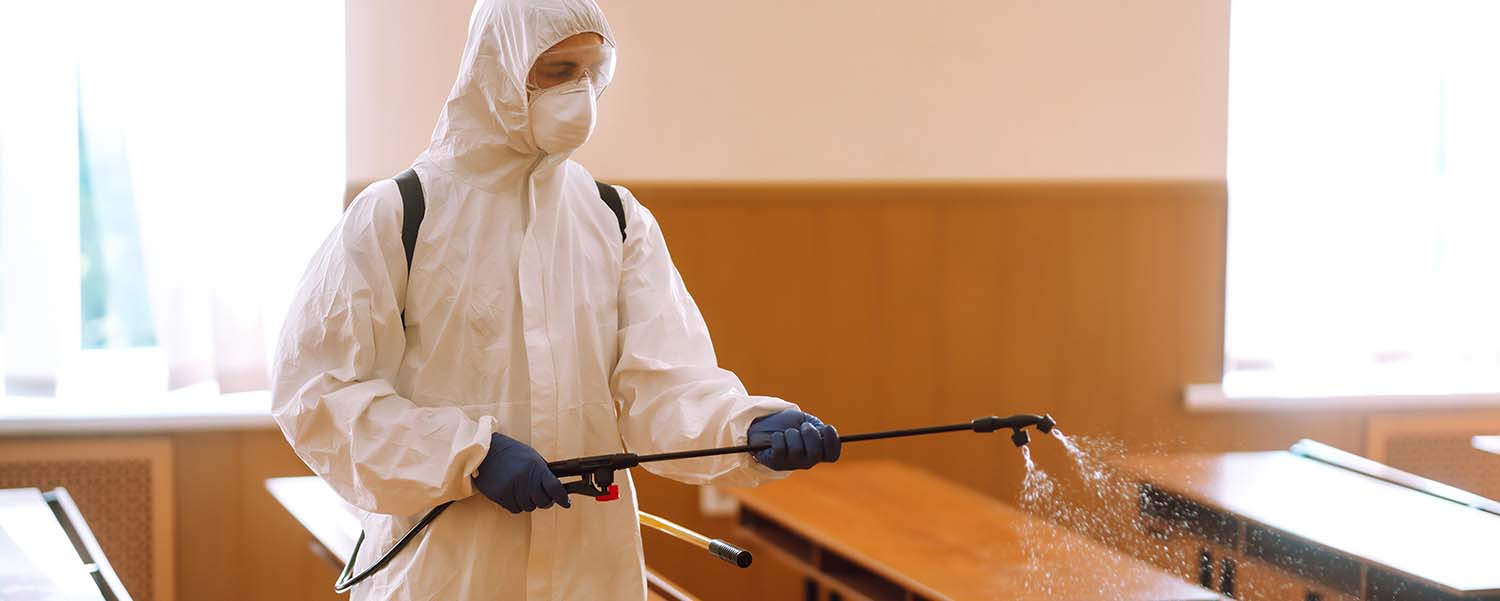Risk Mitigation in Schools

A Gallup Poll published in September 2020 reported that more than 55% of the parents of American school-age children are “very worried” that their children will contract COVID-19 while attending school.
Additionally, another 27% report they are “somewhat worried.” In summary, over three out of four parents surveyed expressed an alert level of worry. Only 9%—or about one in 10—expressed they have no concern at all.
Furthermore, the survey revealed that the “cleanliness and sanitation procedures” of the school weighed heavily in their decision on sending their children back for in-person learning. In fact, 51% reported that they considered this a major factor, as opposed to 47% listing daily health screenings, and 46% on requiring masks.
Since the outbreak of COVID-19, local school systems across the United States have been left mostly to their own systematic infrastructures in determining how and when students and staff could safely return to school. As those infrastructures generally do not have high levels of in-house expertise in areas such as public health, epidemiology, infection control, or general biological risk management, the reliance on external expertise has been unusually high.
While schools in the United States and around the world have a long history of dealing with infectious diseases, the COVID-19 disease outbreak of 2020 placed a much brighter spotlight on the importance of schools as an integral part of the communities they serve. While many schools and school systems have experienced brief closures for more traditional infectious outbreaks, never in modern history have school closures been so extended or universal.
Some of the major problems presented by COVID-19 are:
- SARS-CoV-2 is a novel coronavirus of animal origin for which there currently remains no known cure or vaccination.
- The spread of the disease can sometimes be traced to asymptomatic persons (not experiencing any of the known symptoms).
- The morbidity effect (death rate) of contracting COVID-19 is exacerbated by having chronic health conditions.
The reduction of the R0 (R-naught) factor (average number of people infected by each infected person) has required extensive social distancing, wearing of facial masks, and disruptions to civic and commercial events and activities to “level the curve” of the number of infections.
There are multiple sources of information reporting contrasting data and advice about every aspect of the outbreak.
There are unique challenges of essentially restarting community life while the COVID-19 outbreak continues.
In terms of global scope, at the writing of this article, the World Health Organization reports there have been more than 58 million known cases of COVID-19, with over 12 million of those in the United States. While the rates vary from one geographic region to another, nearly every region has experienced continuing spikes and reductions. It is quite obvious that this reality will continue to exist until an effective vaccine is deployed worldwide.
With that as our mutual reality and with the desire to have as normal a life as possible with these circumstances, it becomes imperative that our schools be model programs in infection control.
My two continuing mantras through this are:
- Faith without a strategy is just a wish.
- Managing for now, is preparing for the next.
Faith without a strategy is just a wish
Educational systems and facilities at all levels, from pre-kindergarten through higher education, must have clearly defined risk mitigation strategies to best protect the students and staff within those facilities.
Risk mitigation is not risk elimination, which must be made abundantly clear. No system in the world can guarantee that an infection will not occur, but every system in the world can undertake strategies that reduce the risks of infection occurring. Referring back to the recent Gallup Poll, remember that we are now several months into the pandemic. Look at the concerns the public has about students returning to school and develop measurable and visible strategies to accommodate those worries.
The GBAC® STAR program for schools is not only an excellent starting point, but is also a comprehensive self-managing program that addresses both facility management and access restriction plans.
Managing for now, is preparing for the next
There is no doubt that we are sailing on uncharted waters even though pandemic preparation has been on the national and global agenda since the National Strategy for Pandemic Influenza Implementation Plan was initiated by President George W. Bush in 2005. Each of us can pontificate about who has done what well and who has not, but now is a better time to prepare for what is with us and in front of us as opposed to doing a root cause analysis for something not yet finished.
Consider all investments in training and equipment as not merely purchasing bandages for the current time, but also how we can best continue to utilize and build on these investments for the future.
While it may be hopeful to believe there will not be another pandemic in the near future, we now certainly know that a pandemic can strike us in ways and places we did not truly imagine. The next one will not be such a body blow to our economic and social existence if we have the preparedness strategies and the professional tools at our disposal. We are learning far too many lessons to simply forget them when COVID-19 is no longer the immediate threat, and our school and university systems will be all the better for the experience.
















